After spending a year with the MagSafe Battery Pack we're more certain that the controversy and concerns at launch were overblown.
The MagSafe Battery Pack is a direct successor of the Smart Battery Case for iPhone. It takes advantage of the MagSafe accessory system found in iPhone 12 and later to charge with minimal user interaction.
When the MagSafe Battery Pack was first announced, we were excited by the prospect of this simple attachable battery extension. Using the Smart Battery Case on previous iPhone models was a chore, and some even kept it attached at all times.
Mired in controversy
Once iPhone users learned the specs like charge speed and battery capacity, an uproar broke out. People considered it a weak offering that wouldn't function near as well as existing cheaper options.
After we received one to test, we quickly made it our go-to charging accessory and scored it a 4 out of 5 on the review. Controversy aside, the math didn't lie — this was the most efficient MagSafe battery pack you could buy at this size.
As always, with Apple products and hot takes, the whole story wasn't known at the onset. Third-party battery packs could attach using magnets, but they weren't MagSafe — a big factor in determining worth.
The efficiency of Qi charging is low enough that a 5,000mAh battery would still only charge the iPhone 14 Pro Max to about 50% despite it having a 4,323mAh battery. Conversely, the MagSafe Battery Pack with a 1,460mAh capacity could charge an iPhone 14 Pro Max to about 40% capacity.
These numbers may not make much sense, but that's because there is a missing crucial value — voltage. The MagSafe Battery Pack has a 7.62V rating, making it an effective 2,920mAh when compensating for the iPhone's lower 3.81V.
Combine this number with the high efficiency of MagSafe charging, and it makes sense how the MagSafe Battery Pack can provide an effective 1,729mAh to the iPhone 14 Pro Max. We get into the math more in our capacity breakdown. The controversial hot takes lacked this data.
At the time, $99 for a MagSafe Battery Pack with those dimensions and charging capacity was an easy decision. Customers had to decide between a low price and a bulky pack or a higher price and a minimalist pack.
One year with the Apple MagSafe battery Pack
Our initial impressions and review ended up proving true in the long run. The MagSafe Battery Pack remained our favorite way to charge the iPhone when away from a dedicated charger.
We'll cede the fact that Apple has a lot of proprietary tricks available that third-party accessories do not. It's the same reason why we favor AirPods over other earbuds. The Apple ecosystem is a significant advantage and, to an extent, an unfair one.
The MagSafe Battery Pack gets a unique launch animation that shows how much battery is left in the pack. It also doubles as a 15W MagSafe charger when connected to an external 20W power source.
These features aside, it still offers a great capacity with magnetic attachment in the smallest package available. Apple's battery pack is so small it fits in any pocket or bag without any problem.
Apple even increased the usefulness of the MagSafe Battery Pack with a mid-life update. In April 2022, Apple increased the battery pack's charging speed from 5W to 7.5W.
Over the last year, we've had multiple great use cases for this battery pack.
For example, we've gone on a few road trips in a vehicle without any means to charge a phone. The iPhone was able to play music to a Bluetooth speaker and provide GPS directions on a six-hour trip while attached to the MagSafe Battery Pack.
Sure, the battery pack was drained by the halfway point of the trip, but it provided enough power to get us there with battery life to spare. Otherwise, we'd have been running cables from our extra large battery.
Another great use case has been on outdoor trips like amusement parks or nature trails. We could keep our iPhones charged while walking around without needing a bulky battery.
And, since it's MagSafe, it fit everyone's iPhone as long as they had an iPhone 12 and newer with a MagSafe case. Other battery packs can do the same, but some of those original ones released in the summer of 2020 are so big they'd be incompatible with the oversized camera bump on the iPhone 14 Pro.
Overall, the MagSafe Battery Pack has been an excellent investment over the past year, and we're interested in what Apple does next in this space. Competitors are catching up, though, and offer some unique options.
Catching up with Apple
Battery and charging technology has changed a lot since the summer of 2021. However, the magnetic battery pack ecosystem hasn't gained much.
Apple didn't update how MagSafe worked with the iPhone 13 or iPhone 14. So, they still operate using the same magnets at the same 15W max charging rate.
The iPhone still defaults to 5W or 7.5W wireless charging speeds when using Qi. Only official licensed products have access to MagSafe 15W, so everything else still uses the less-efficient Qi standard.
Third-party battery packs have gotten much smaller. Some, like Anker's MagGo 621, are nearly the same size as Apple's pack.
The reduction in size, multiple color options, and some unique features make Apple's pack less of a standout. The Qi efficiency issues are still there, and Apple's is still the best for its size, but there's more to it.
Get the Anker 622 battery pack and it has a fold-out stand. It may be bigger than Apple's, but the utility of a built-in stand can't be understated.
There are other battery packs on the market, but few come as close to Apple's as Anker. We hope to see other companies try to compete in the space, but most make such large packs they may as well be separate banks.
So, if we were to make a recommendation today, it is only slightly more complicated. Apple's MagSafe Battery Pack is still $99, while competitors' options start around $40.
If you can get Apple's MagSafe Battery Pack on sale, or even open box, do it. It's an okay buy at $99 for what you get, so anything less is a steal.
The previously mentioned Anker battery packs are great options if you're not willing to spend more. The added stand in the 622 model is also worth checking out.
Competitor's options are still around 5,000mAh despite getting smaller. The low efficiency of Qi means more energy lost during charge, which translates to more heat during charging.
More heat means more battery degradation in the iPhone. Keep that in mind when choosing options other than Apple's since the MagSafe Battery Pack will provide power with less heat loss.
The MagSafe Battery Pack is still the one to beat for its size versus efficiency ratio. Though it isn't perfect, and Apple could easily release an updated version.
MagSafe Battery Pack 2.0 wishlist
The MagSafe Battery Pack is already about as minimalist as things come. There are no buttons, no flashing displays, nor any fans.
However, we'd love to see some color options, if not a black model at least. The stark white material is easily dirtied and clashes with dark cases. We've even taken to using a silicon cover to make it appear black.
Another annoying factor is charging the device itself. We've minimized our travel bag to wireless charging and USB-C — except for the MagSafe Battery Pack and AirPods Max.
Today, Lightning makes sense for a product that charges an iPhone, which is also a Lightning product. However, rumors suggest that "iPhone 15" could have USB-C. We'd love to see USB-C on the next MagSafe Battery Pack.
Also, the magnets on the MagSafe Battery Pack are the same polarity as a MagSafe Charger, so it cannot be charged via MagSafe. Apple could add MagSafe or some wireless charging option to the other side of the MagSafe Battery Pack — but that's not strictly necessary.
Of course, the most obvious and likely upgrade is more battery capacity. Battery cells can (theoretically) be shrunk as material science improves, or different materials can be used to make them smaller, but we'll see how that goes with time.
The MagSafe Battery Pack is available via Amazon for $99. There aren't any rumors about a second-generation model coming anytime soon, so now is just as good as a year ago to buy.
 Wesley Hilliard
Wesley Hilliard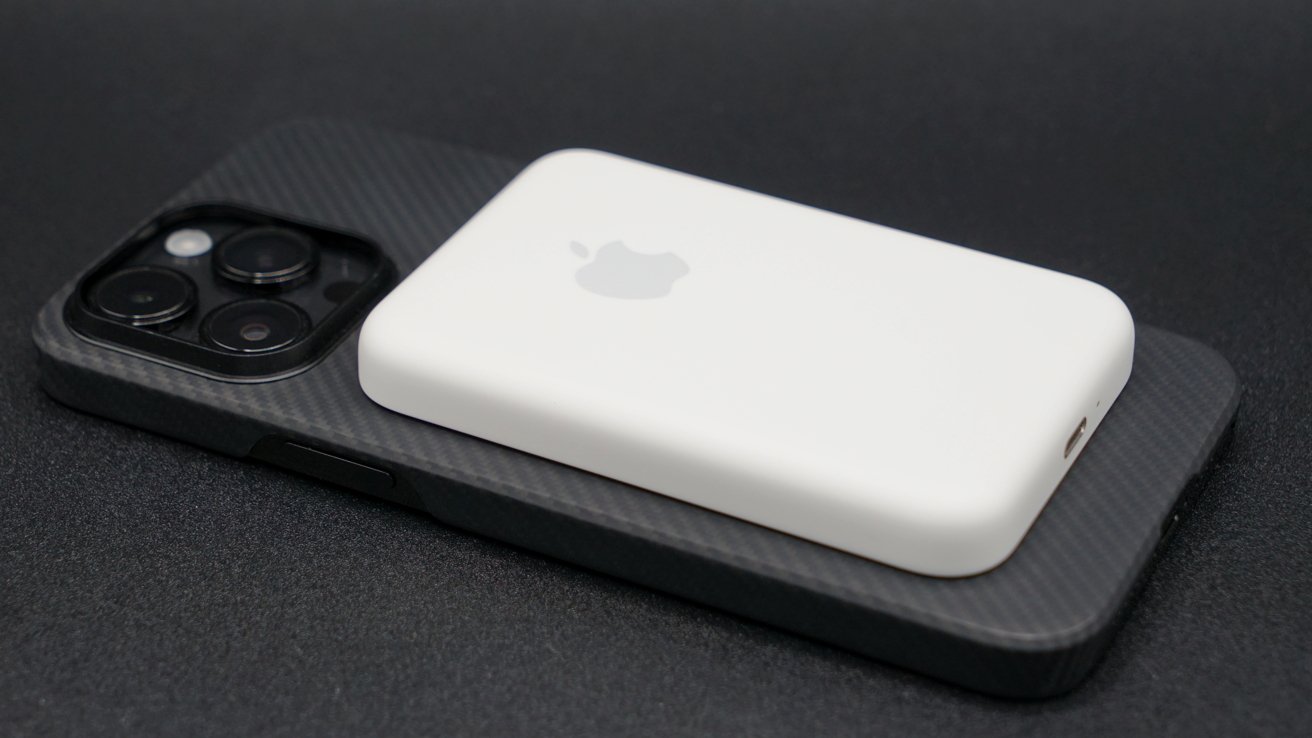
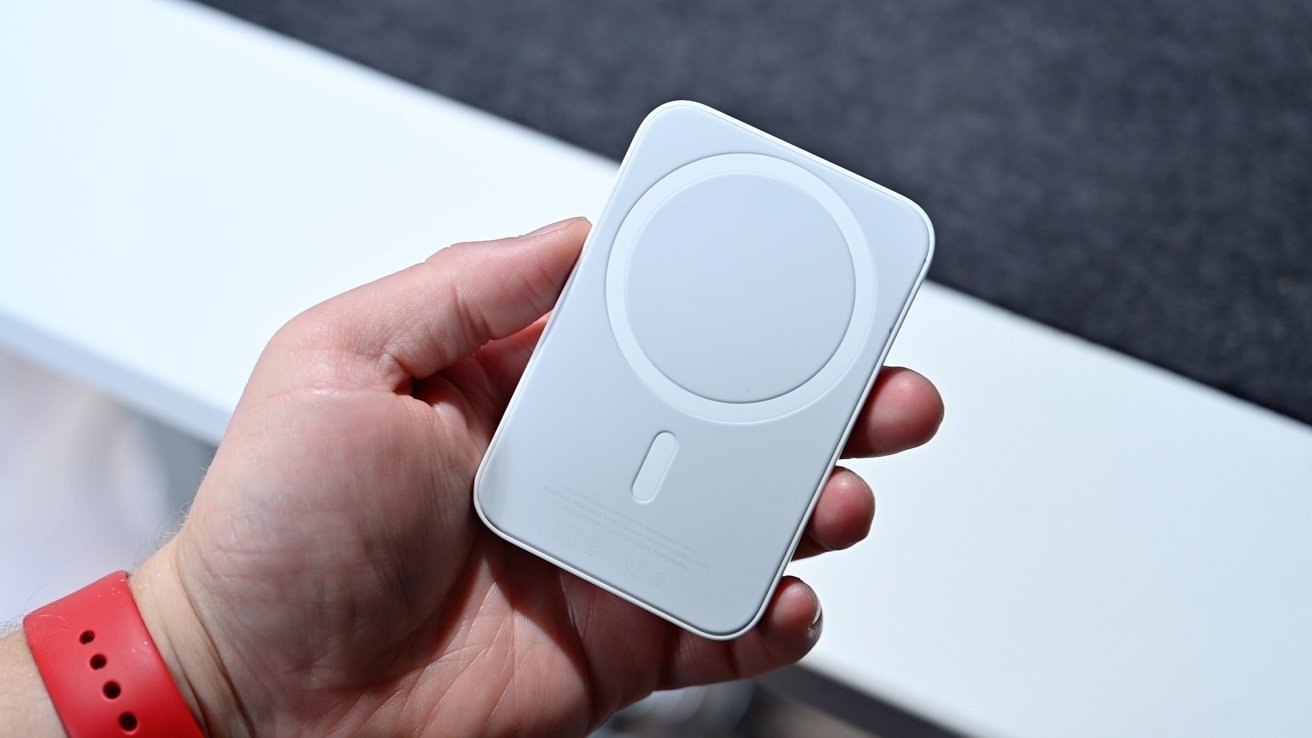
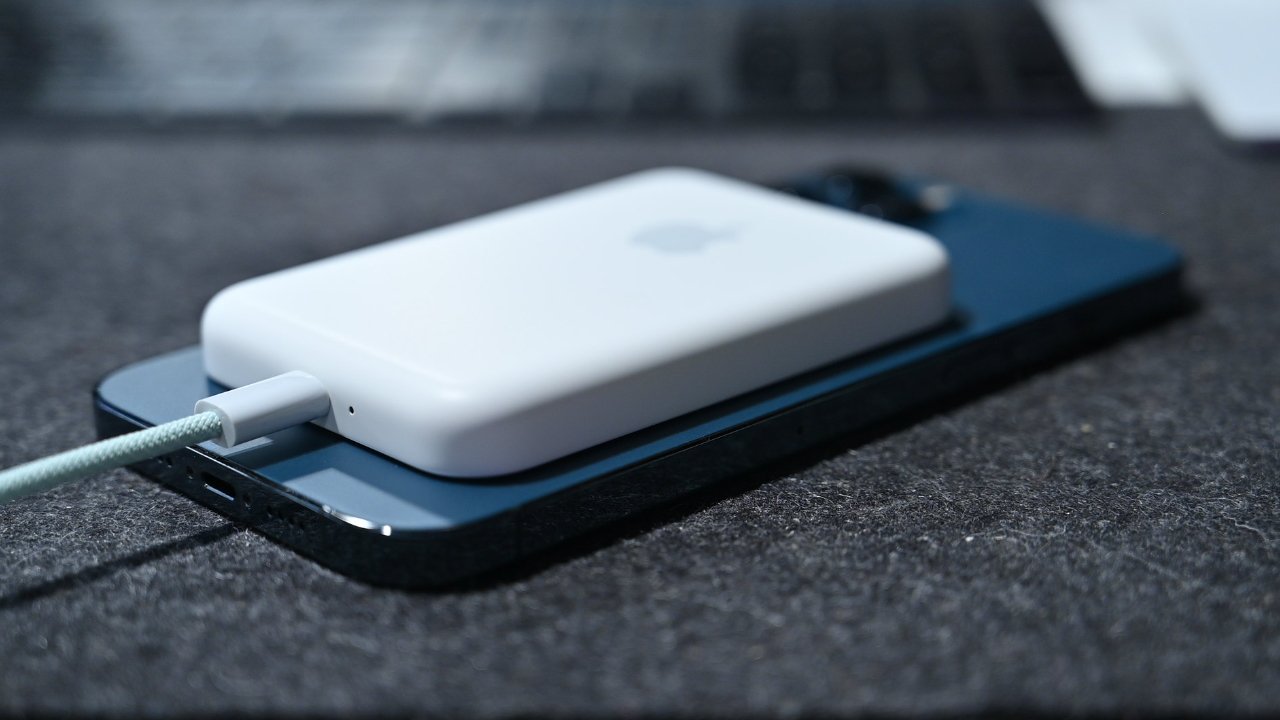

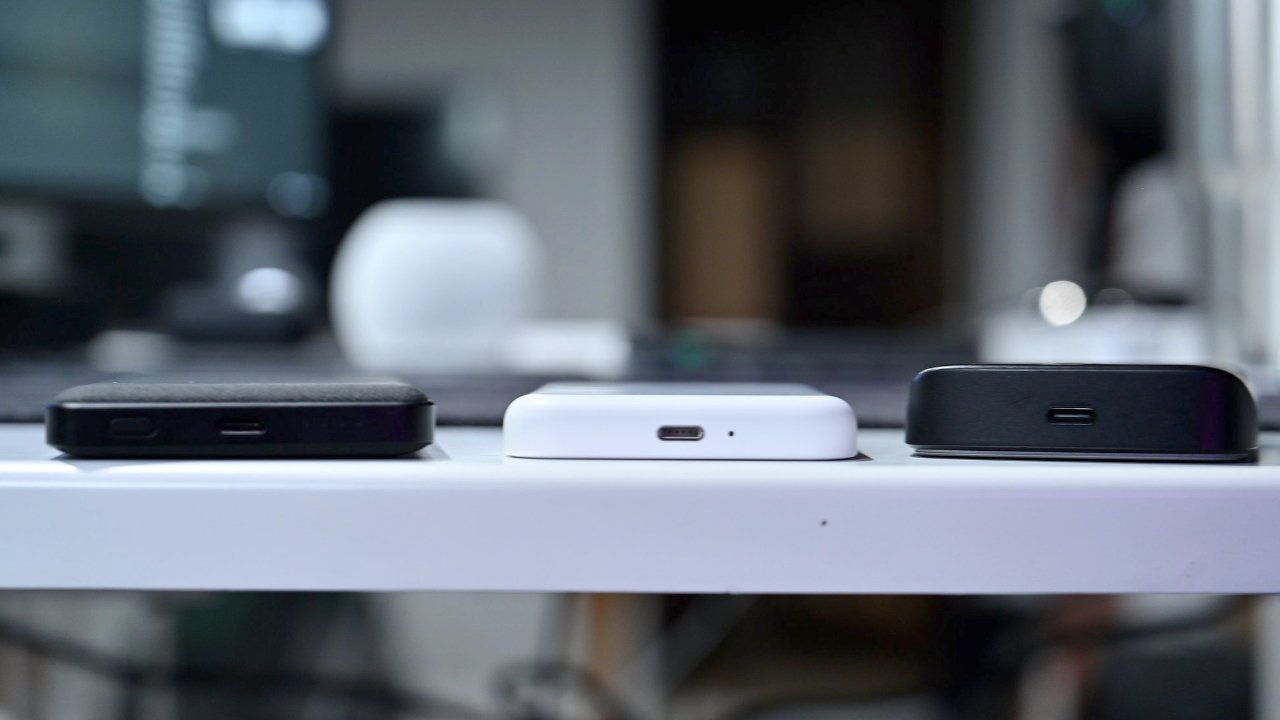
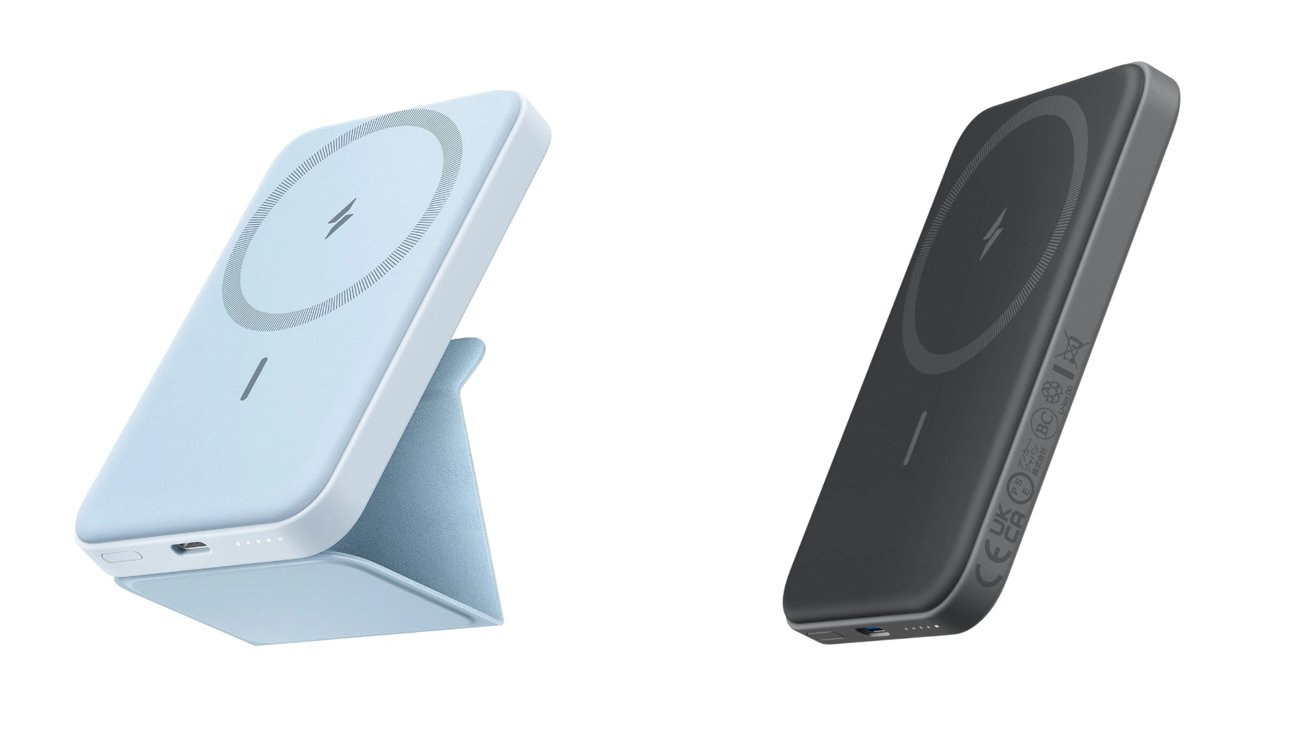
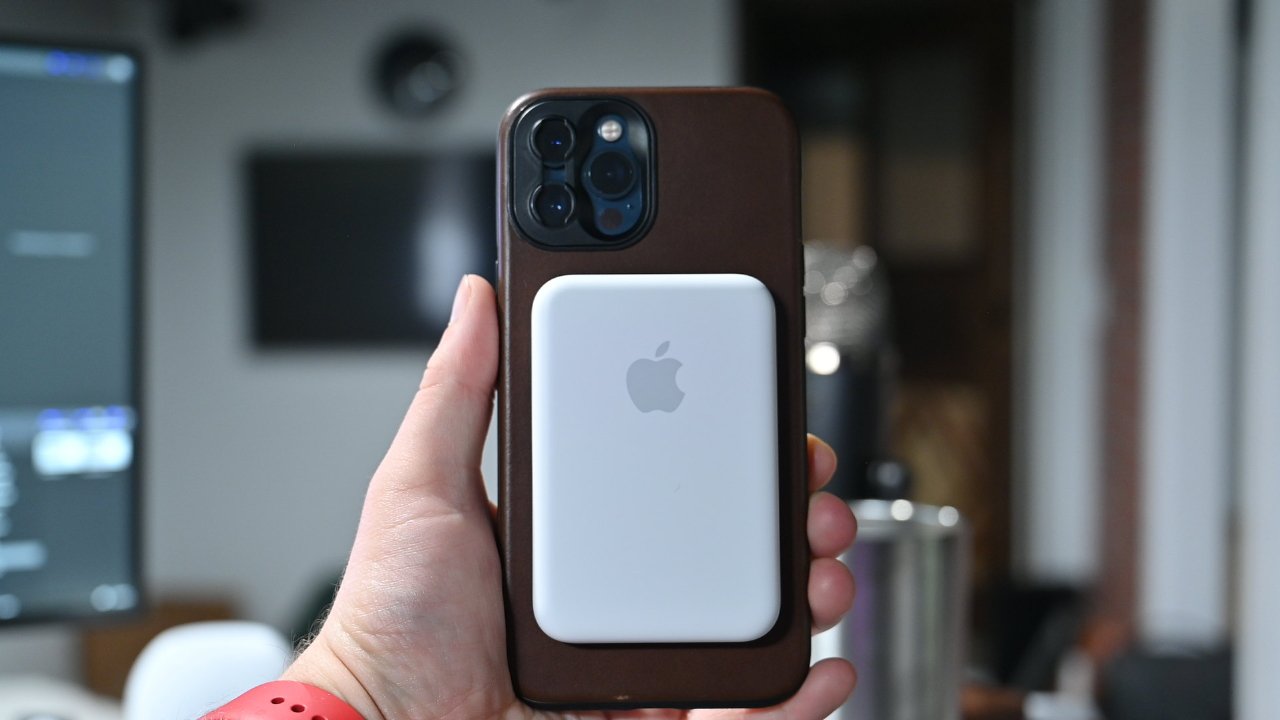







-m.jpg)






 Marko Zivkovic
Marko Zivkovic
 Mike Wuerthele
Mike Wuerthele
 Christine McKee
Christine McKee
 Amber Neely
Amber Neely
 Sponsored Content
Sponsored Content


 William Gallagher
William Gallagher









12 Comments
The Anker 622 is cute and lighter-weight but the wireless charging is very slow and--as alluded to in the article--generates a lot of heat. So much heat that the iPhone (13 Pro Max) put up a message that charging was paused due to overheating, when the iPhone-Anker combo was in my jacket pocket. The iPhone was indeed hot. I recommend using a USB-C-to-Lightning cable for charging with this battery instead of wireless charging.
Wireless charging does not make sense when you're carrying the power source around with you. The inefficiencies of wireless charging are antithetical toward the goal of getting maximum charge from a minimal size/weight battery. Never mind that wireless charging with this battery pack is horrendously slow. I'd much rather if Apple offered a new smart battery case instead of this thing.
It’s total BS that Apple didn’t bring out a MagSafe battery pack in black or space grey in the first place. If they had I’d have bought one. Will wait patiently for that to happen. One thing the company seems to lack is common sense.
The main benefit is only briefly mentioned in the article: the MagSafe Battery Pack doubles as a MagSafe charger. If you use it as your main charger at home, you gain: one less device to remember and to to charge before a trip; one fewer cable needed; one less puck to own; one less travel accessory to have in the bag.